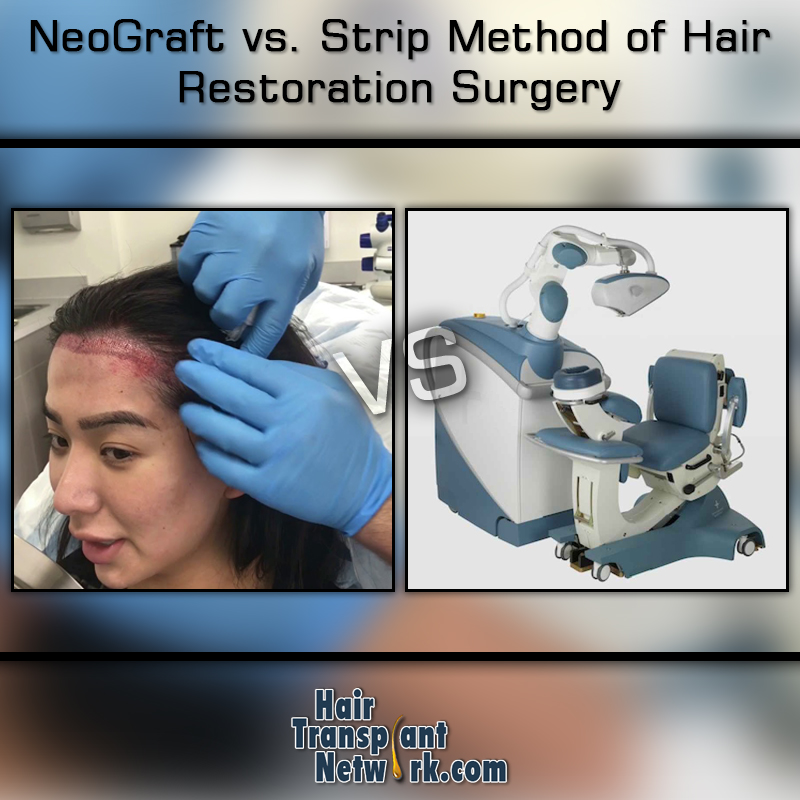Men and women experiencing thinning hair are often on the lookout for hair loss treatments that really work. Amongst them, hair transplantation is the only method of restoring hair to completely bald areas. Today’s modern hair restoration surgery is performed by one of two popular donor harvesting techniques. These include follicular unit strip surgery (FUSS) and follicular unit extraction (FUE). Each technique requires the use of various tools to perform the procedure. The Neograft Hair Transplant Machine is one such device. In this article, we will be comparing the strip procedure to FUE via the Neograft.

Comparing Neograft Hair Transplants to the Strip Method:
Strip Method:
Follicular unit strip surgery (FUSS) is performed under local anesthetic and involves the removal of a strip of tissue containing hair follicles from the sides and back of the scalp (called the donor area). The hair transplant surgeon then sutures or staples the wound using the trichophytic closure technique while experienced technicians sliver the strip and dissect follicular units (hair groupings as they appear naturally in the scalp containing 1 to 4 hairs) under microscopes. While the surgeon makes tiny incisions in the recipient/balding area, the follicular units are stored in a solution, typically containing saline and possibly PRP (platelet rich plasma). Lastly, follicular units are carefully placed into tiny recipient sites in the balding area.
FUE Via the Neograft Machine
The manufacturer of the Neograft hair transplant machine would have you believe that the Neograft is its own procedure, distinct from both FUSS and FUE. However, the Neograft is simply a sophisticated device used to extract follicles during the FUE procedure. It also utilizes a “no touch“ technique that’s designed to minimize human error and damage to the grafts during the implantation process. However, is the Neograft all that it’s hyped up to be?
Every device comes with its own set of advantages and disadvantages. The Neograft can assist in making the excision process both easier and faster, however, the vacuum/suction device attached to the Neograft can potentially dehydrate and damage the follicles. So while the “no touch“ application may be advantageous to neophyte doctors and inexperienced technicians, many skilled FUE surgeons prefer manual extraction devices in order to “feel“ the excision process and typically produce superior results.
The main advantage of FUE in general over FUSS is the lack of linear scarring the procedure produces. FUE however, leaves tiny, circular scars that are typically covered by the surrounding hairs. FUSS is typically the procedure of choice for men with advanced balding because more hair can typically be moved in a single session. However, many top FUE surgeons are now able to move more hair in a single session that’s comparable to strip than ever before – making FUE the procedure of choice for those concerned about the linear scar associated with FUSS. FUSS, however, is still significantly less expensive, making the strip method the dominant procedure overall.
Which Method to Choose?
Choosing the right hair transplant surgeon is vital to ensure you get the very best results. Thus, men and women considering surgical hair restoration are encouraged to research all surgeons they are considering regardless of which donor harvesting method or device is used during the procedure. Our hair restoration forum enables prospective patients to research doctors, read genuine hair transplant reviews, view before and after photos and more. You can start your own topics or reply to any topic you find interesting. Knowing the pros and cons of each donor harvesting method and device will enable you to make an educated decision about which technique is best for you.

